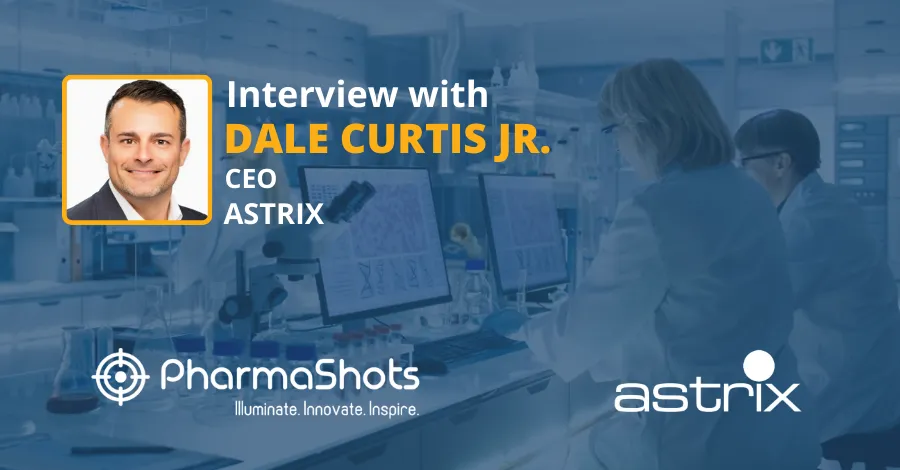
Expanding Services: Mo Jain Sheds Light on Sapient’s Recently Launched Discovery Proteomics Services
Shots:
-
Following the roll-out of high throughput discovery proteomics services, Mo Jain, Founder and CEO of Sapient engages in a stimulating conversation with PharmaShots
-
Unlike conventional mass spectrometry-based proteomics methodologies in the market, Sapient’s Discovery Proteomics Services leverage the nanoparticle enrichment technology to measure more proteins and PTMs within the plasma proteome
-
While highlighting Sapient’s multi-omics pipeline for biocomputational analysis, Mo sheds light on the Sapient Human Biology Database that comprises multi-omics data collected in over 100,000 human biosamples
Saurabh: Sapient has rolled out its high throughput discovery proteomics services. What market need are you fulfilling with this new offering?
Mo: The last 20 years of discovery have primarily focused on genomics, which has provided tremendous insight into the genetic landscape of disease and disease heritability. However, genetic biomarkers are largely static measures of what could happen over the course of a person’s life. We know that health and disease is a dynamic process, and today we’re finding that sequencing more genomes has diminishing returns. This realization, combined with significant technological advances that now enable efficient biomarker discovery beyond the genome, is driving the field into the next frontier: to the discovery of dynamic markers, notably proteins biomarkers, that capture dynamic processes along the trajectory of health and that can serve as early indicators of disease onset, potentially years before clinical presentation.
Proteomics has become a hot area of interest and is of growing importance to biopharma for good reason. Proteins orchestrate many biological functions, and changes in the proteome occurring over time can be reflective of biological dysfunction, disease processes, or drug response. Understanding these dynamic changes is absolutely essential as part of the drug development process. There is an abundance of scientific literature to suggest that instituting a drug development program together with biomarkers greatly increases overall approval rates, irrespective of drug modality and therapeutic area. Discovery of protein biomarkers that can be used for disease diagnostics, companion diagnostics, and as target engagement and pharmacodynamic markers can complement genomics data and drive new insights needed to advance precision drug development.
Saurabh: Tell us how your proteomics services will contribute to the discovery of dynamic biomarkers.
Mo: Sapient’s discovery proteomics offering will help the scientific community more quickly realize the ability to identify and leverage circulating protein biomarkers for key applications such as early disease detection, patient stratification in clinical trials, disease prognosis, and ultimately, for guiding implementation of precision-based therapeutics. These biomarkers can play a critical role in aligning individuals with a specific disease subtype with an optimal therapy, as well as for evaluating the efficacy of that drug at a very early timepoint as markers of target engagement and pharmacodynamic response.
To enable greater discovery in plasma proteomics, we had to address a significant bioanalytical hurdle: the vast dynamic range of proteins in blood, which spans 10 to 12 orders of magnitude. Current state-of-the-art methods rely on binding agents like antibodies or aptamers to selectively isolate proteins of interest, followed by readout via genetic sequencing or gene chip technology. However, these methods present challenges, including imperfect binding fidelity and an inability to capture dynamic changes in protein structures. Protein variants and post-translational modifications (PTMs) serve as crucial on/off switches for protein functions and are where much of the biologically important information is encoded.
Our discovery proteomics methods embrace mass spectrometry as a transformative technology, capable of directly mapping and sequencing peptide fragments that are part of a protein to achieve accurate protein identification. We’ve innovated our technologies and approaches to address the inherent limitations of mass spectrometry-based proteomics, firstly by utilizing nanoparticles for protein extraction from blood to overcome the issue of dynamic range. Of importance, our nanoparticle enrichment captures plasma proteins as well as exosomal and membrane-bound proteins which may be key for early detection. Secondly, we’ve optimized our systems for high throughput to allow for analysis of these extracted proteins and PTMs with greater speed.
Today, we can measure thousands of proteins in thousands of samples with high fidelity, using peptide mapping with interrogation of PTMs including phosphorylation, acetylation, methylation, and ubiquitination. Our approaches enable deep coverage and are optimized for revealing biological insights from the blood and tissue proteome.
Saurabh: Could you elaborate on the specific technologies or methodologies employed in Sapient's high-throughput discovery proteomics services?
Mo: Certainly! Our high throughput discovery proteomics approaches at Sapient are built upon a carefully curated combination of cutting-edge technologies and methodologies to address challenges with fidelity and those posed by the large dynamic range of proteins. We’ve spent a great deal of time assessing plasma proteomics enrichment and depletion strategies and are partial to nanoparticles. After extensive review of the market offerings in this space, we selected and optimized a nanoparticle technique that allows us to de-enrich the most abundant proteins in blood while simultaneously enriching for the least abundant proteins, including free proteins, exosomal, and membrane-bound proteins that are coming from tissues of interest and are circulating in blood.
Following protein capture, we leverage nanoflow chromatography coupled to the Bruker timsTOF Pro 2, a state-of-the-art, high resolution qTOF / ion mobility mass spectrometry system, to perform label-free DIA discovery proteomics. The timsTOF performs mass analysis via direct peptide sequencing, which enables high confidence protein identification and measure of PTMs.
Saurabh: How will Sapient’s discovery proteomics fulfill the demands of biopharma and academic customers to provide solutions to critical challenges?
Mo: At Sapient, we view our role as a service organization supporting those that are doing the hard work of drug development. We can provide specialized methods and expertise, like with our discovery proteomics offering, to help drive efficiency throughout that process. Ultimately, biopharma drug developers are challenged to identify the right subpopulation of people with a given disease who are going to benefit from receiving a specific therapy, and must then evaluate their response to that therapy. In each of these steps, dynamic biomarkers can provide a tremendous amount of insight, answering questions such as: what are the key protein targets that can be drugged and/or are causal to various biological processes? What are the key proteins that reflect tissue injury and toxicology at the earliest stages? Or that may reflect early disease diagnosis? And what are the key protein biomarkers that allow for sub-stratification of patients into those who are most likely to respond to a given therapy?
Our discovery proteomics services reveal protein biomarkers that can provide critical information to guide drug development decision-making at every phase, from identifying the best targets to validating those targets, understanding engagement of the targets by a pharmaceutical – whether it be a small molecule, large molecule, or gene or cell therapy – understanding toxicology responses to these therapies, and then deploying them as part of clinical trials.
Saurabh: How is Sapient’s approach to large-scale proteomics different from already existing methodologies in the market?
Mo: We really view our mass spectrometry-based discovery proteomics services as complementary to existing approaches for interrogating the plasma proteome, addressing some of the key challenges faced with those methods. State-of-the-art proteomics methodologies over the last several years have largely centered on the use of binding agents, such as aptamers and antibodies, which recognize and bind to target proteins. Once the protein of interest is isolated, its abundance is read out via sequence tags. The challenge is that these approaches do not allow for measurement of post-translational modifications or variant proteins, which can hold critical functional insights. Additionally, identification of the protein is based solely upon the fidelity of the binding between the antibody or aptamer and the protein of interest, which we know is not always perfect.
With mass spectrometry, we can have absolute certainty in the identification of a target protein using peptide mapping and sequencing. We can also discern protein variants and PTMs. For example, we can differentiate between a native protein form and a genetically over-expressed form of that protein. Measurement of protein variants and PTMs allows for more in-depth analysis of protein function and regulation. Now, the reason our offering differs from other mass spectrometry-based proteomics methodologies in the market is that we leverage our nanoparticle enrichment technology to measure more proteins and PTMs within the plasma proteome. And, our high throughput systems enable efficient measurement across thousands of samples for rapid turnaround of data. For example, Sapient’s /Core/ Discovery method captures more than 4,000 proteins and PTMs in plasma, and is amenable to projects from 10 to 10,000+ biosamples. This method can also be optimized for throughput and robustness across larger, population-scale studies (what we call /HT/ Discovery), or for cell- and tissue-based studies when the deepest proteome coverage is required (what we call /Deep/ Discovery).
It is also important to note that biopharma drug developers need pipelines that allow for translation of biomarker discoveries into clinical assays that can be deployed as part of clinical studies and ultimately, in the care of patients. Sapient’s discovery proteomics approaches are applicable to multiple liquid and tissue biomatrices, including from preclinical and clinical systems, providing a clear translational pathway.
Saurabh: Tell our readers in brief about your biocomputational pipeline for statistical analysis.
Mo: The advancements in high throughput bioanalytical technologies over the last several years have allowed us to generate more data than ever before, but data in and of itself has little actionable value. The real goal is to generate insight and knowledge, particularly insight that allows a drug development program to be driven forward in an effective manner. The bridge between data and knowledge is spanned by biocomputational analysis. That is why, in tandem with building our mass spectrometry-based bioanalytical infrastructure, Sapient has also built an expert biocomputational team that is highly skilled in the handling and analysis of large-scale, multi-omics datasets to answer key biological questions.
Our data scientists are able to take very complex, multi-dimensional data, not only from proteomics but also from metabolomics, lipidomics, and genomics, and perform integrative analyses to map biomarker-genotype and biomarker-phenotype associations and to elucidate insights within the context of the biological questions being asked. We believe data generation and data analysis must go hand-in-hand, and through our biocomputational analyses we can leverage data for meaningful discovery and to deliver knowledge that moves drug development programs forward.
Saurabh: Does Sapient have any in-house database to store the insights generated through multi-omics services? How many samples have you analyzed as of now?
Mo: An exciting evolution that has occurred over the last decade is the emergence of large public databases, stemming from the growing realization that there is great value in scientific data sharing and in leveraging data as a living entity that can continue to inform biopharma R&D over time. Sapient certainly has access to many of the public databases available today, but at the same time we’ve also generated our own internal database – what we call the Sapient Human Biology Database – which is comprised of multi-omics data collected in over 100,000 human biosamples. These samples have been collected from diverse individuals and studies around the world and have all been run on our mass spectrometry systems. To date, much of the analysis that has been done on these samples has focused on small molecule biomarkers (metabolites and lipids) as part of our discovery metabolomics and lipidomics offering, but we are continually growing our database and are focused on adding proteomics data to further enable multi-omics insights.
What makes these samples particularly special is that they are linked to longitudinal information from individuals spanning 10-30 years, including adjudicated clinical outcomes as well as data on demographic features, lifestyle factors, and genetic information. Our database can be used to biologically validate biomarker discoveries that we identify in our customers’ studies in independent human samples, helping to amplify discovery, build confidence in findings, and aid translation.
We’d be happy to talk further with anyone interested in how we can leverage our discovery proteomics and biocomputational capabilities in tandem with our Human Biology Database to identify, validate, and translate biomarkers that can advance precision medicine programs. Please don’t hesitate to contact us through our website to discuss your needs or project.
Image Source: Canva
About the Author:

Mo Jain
Dr. Jain is a physician-scientist with more than 20 years of expertise in physiology, biomedicine, engineering, computational biology, and mass spectrometry. Prior to founding Sapient, he formed and was director of Jain Laboratory at the University of California San Diego (UCSD). There he led a multi-disciplinary research team of chemists, engineers, mathematicians, epidemiologists, and physicians to develop next-generation rapid liquid chromatography-mass spectrometry (rLC-MS) systems to probe dynamic biomarkers of health, disease, and drug response across population-scale human studies. Dr. Jain founded Sapient in 2021 as a spinout of Jain Laboratory to expand upon the mission of accelerating insight into human biology to advance precision drug development.
Related Post: Bayer at ASCO GU: Neal Shore Speaking about Nubeqa with PharmaShots
Tags

Saurabh is a Senior Content Writer at PharmaShots. He is a voracious reader and follows the recent trends and innovations of life science companies diligently. His work at PharmaShots involves writing articles, editing content, and proofreading drafts. He has a knack for writing content that covers the Biotech, MedTech, Pharmaceutical, and Healthcare sectors.














